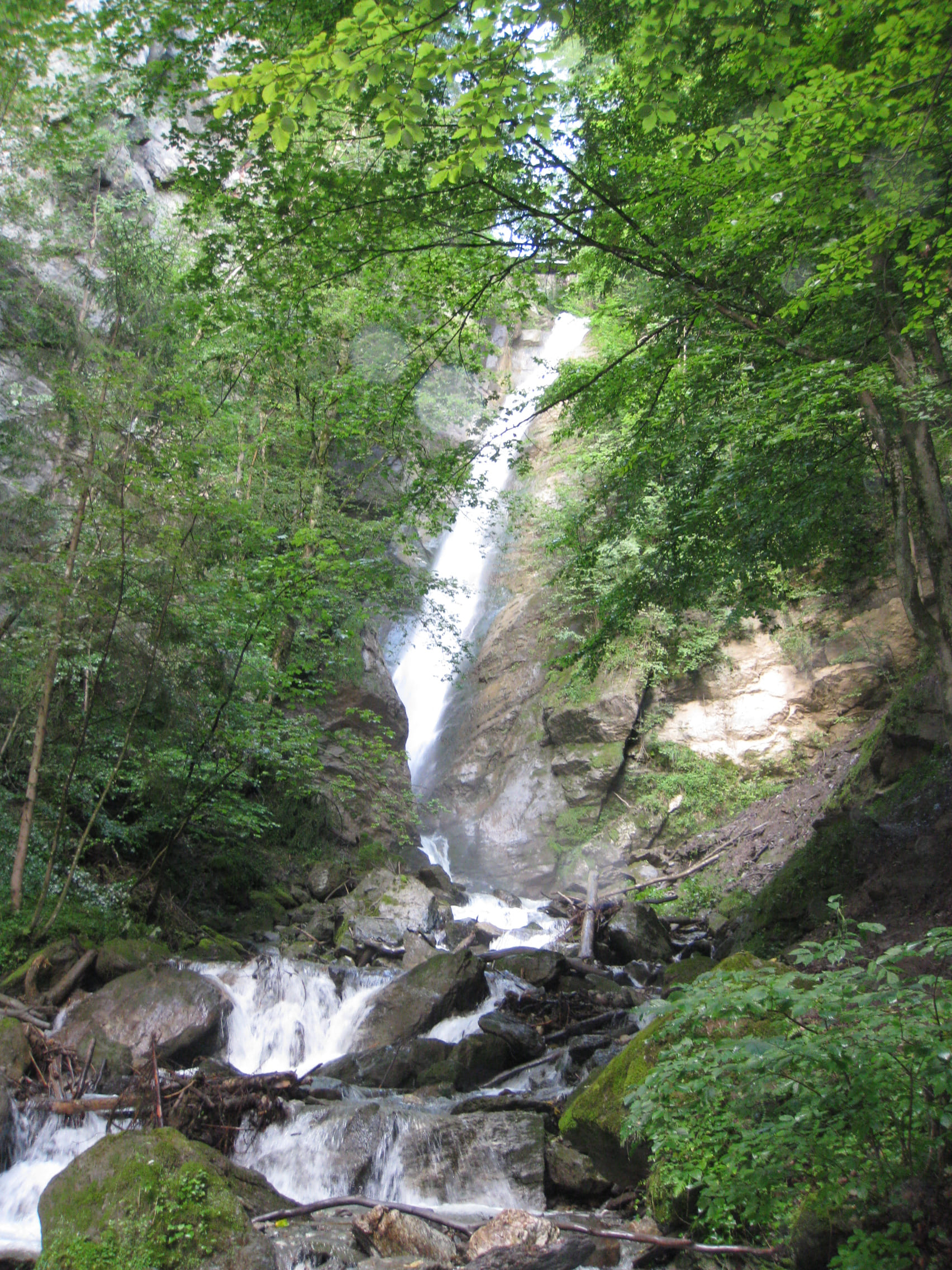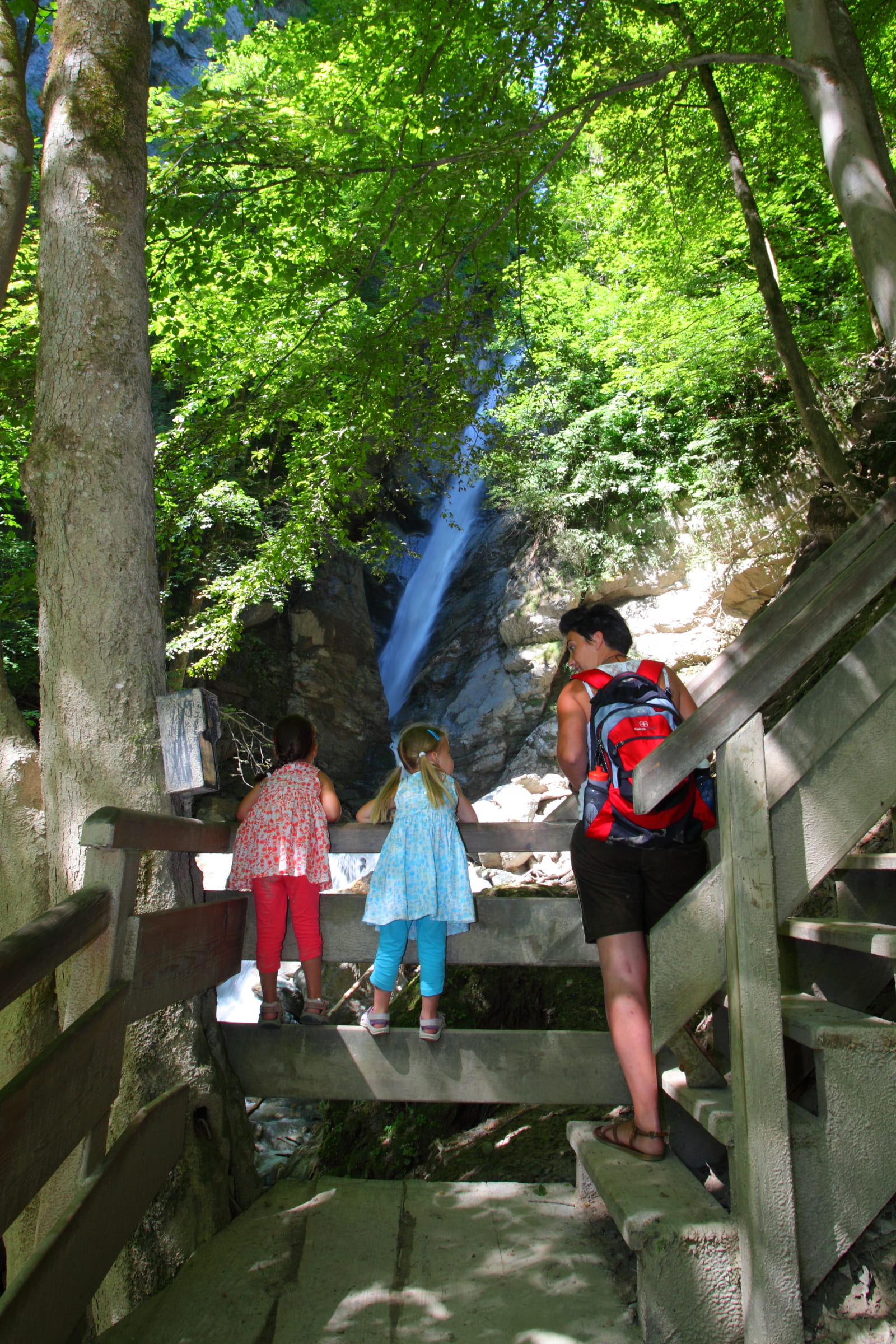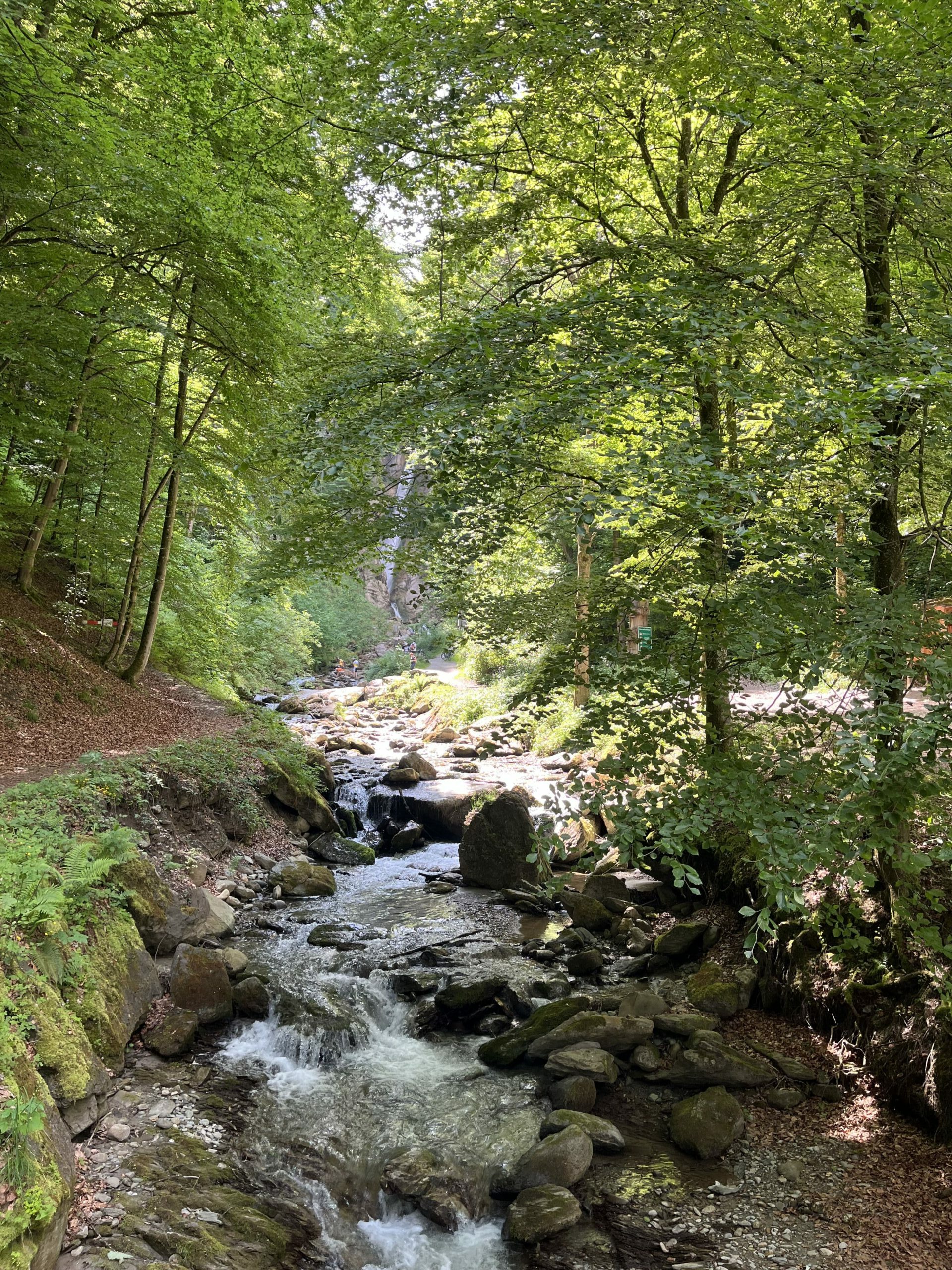Gainfeld - Waterfall
Not far from the visitor center of the Ore of the Alps UNESCO Global Geopark, the Gainfeld waterfall drops about 50 m into the depths. The Gainfeld creek originates from the springs of Kranzbrunnen on Mitterberg below the Hochkönig. After flowing through the Gainfeld valley, it falls down in the form of a waterfall in the area of Laideregg before flowing through Bischofshofen and then on into the Salzach river.
How does a waterfall form in the soft shales and phyllites of the greywacke zone? In principle, the Gainfeld waterfall would cut relatively evenly into the
soft rock and form a V-shaped valley.
Here, however, there is a hard ridge that crosses the valley and thus prevents
the continuously receding erosion. This threshold forms the so called Gainfeld conglomerat, a coarse conglomerate of quartzite, gneiss and marble from Upper Carboniferous age (approx. 320 million years ago) builds up the monadnock. This, also partially associated with copper ore
veins, is extremely hard and tough, making it difficult to erode and responsible for the barrage here. At the foot of the waterfall is then again the easily erodible, brittle slate rock.
Kids
Forest bathing
The text is intended to make children aware of the natural environment, that they have now arrived in nature and help them to fully appreciate it. In our fast-paced world, we rarely take the time to stop and take in our natural environment with all our senses. Use this opportunity with your children and take this moment of peace. Ask the parents or guardians to read this short text to the children, you are welcome to do this exercise with your children to arrive and perceive.
"Close your eyes, breathe in deeply and then breathe out again. Keep your eyes closed and concentrate on what you hear. What sounds do you hear? Listen to the rushing and splashing of the Gainfeldbach stream as it falls 50 metres into the depths and makes its way through the stream bed. Perhaps you will also hear a bird lingering on a branch and singing a song or a small ant crawling through the thicket.
Take another deep breath and concentrate on the odours of the forest. What can you smell? Is it the moss at the edge of the path or is it the trees through which the light wind blows? The scent of the forest is unique and unmistakable.
Now you have perceived the sounds and smells of the forest, you have arrived, now open your eyes. Look at the waterfall in all its splendour, how the water cascades down so powerfully and far. Look at the trees and the beautiful, rich colours of the leaves. Now you're ready to go, it's great that YOU are here, enjoy the hike!"
Bathing in the forest, what is that?
Is that bathing in the forest? Not quite, forest bathing is a walk in the forest, where you listen carefully, look and also perceive the smells of the forest. This allows you to take in nature with all your senses and really enjoy it.
Close your eyes and listen very carefully: What can you hear?
Breathe in deeply and then breathe out again: What can you smell?
When you open your eyes again, what can you see?
If you like, you can also touch the forest floor or feel a tree trunk.
Be aware of all these impressions. Now the hike can begin, have fun!
Forest bathing explained simply
Our everyday lives are getting faster and faster, the mobile phone rings, the next notification comes in, it is often loud and stressful in our daily lives. Sometimes it is important to take a deep breath and pause for a moment - the forest is the perfect place for this. Forest bathing originally comes from Japan ("Shinrin-Yoku") and involves spending time in the countryside to relax. It is important to move through nature with mindfulness and to experience it with all your senses. Forest bathing with mindfulness can look very different: You can take the time to close your eyes and listen to the sounds of nature or take in the smells of the forest. It has even been scientifically proven that forest bathing can have a positive effect on physical and mental health as well as a stress-reducing effect in our fast-paced world.




